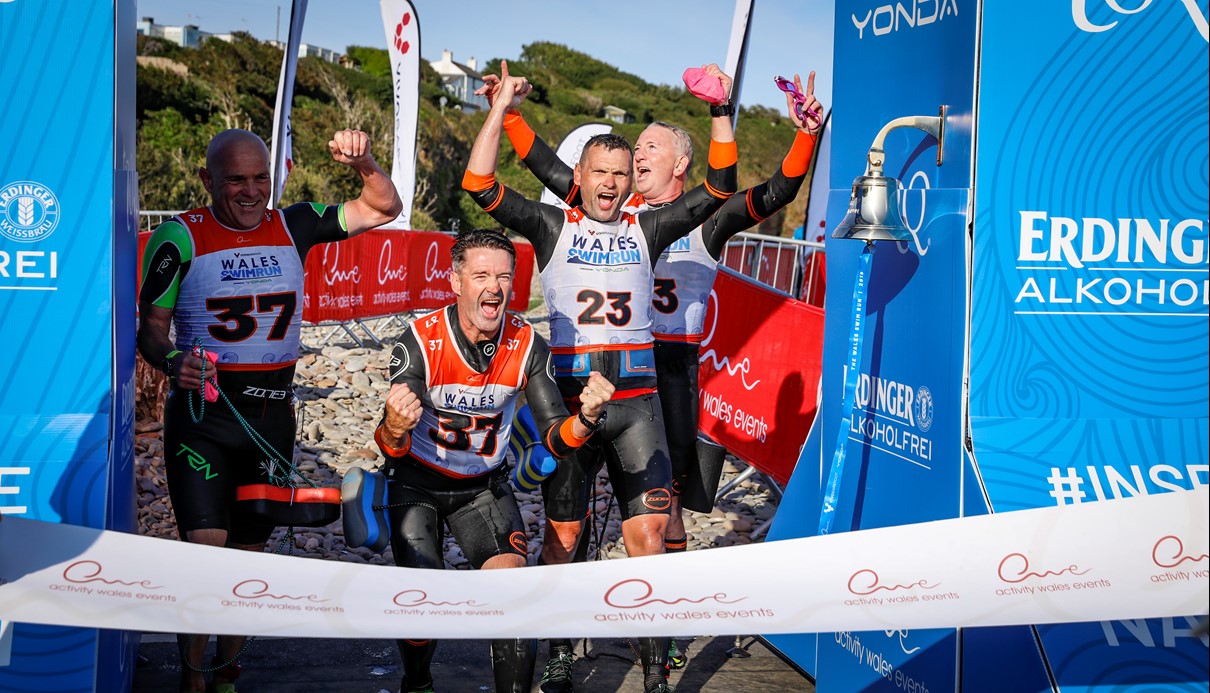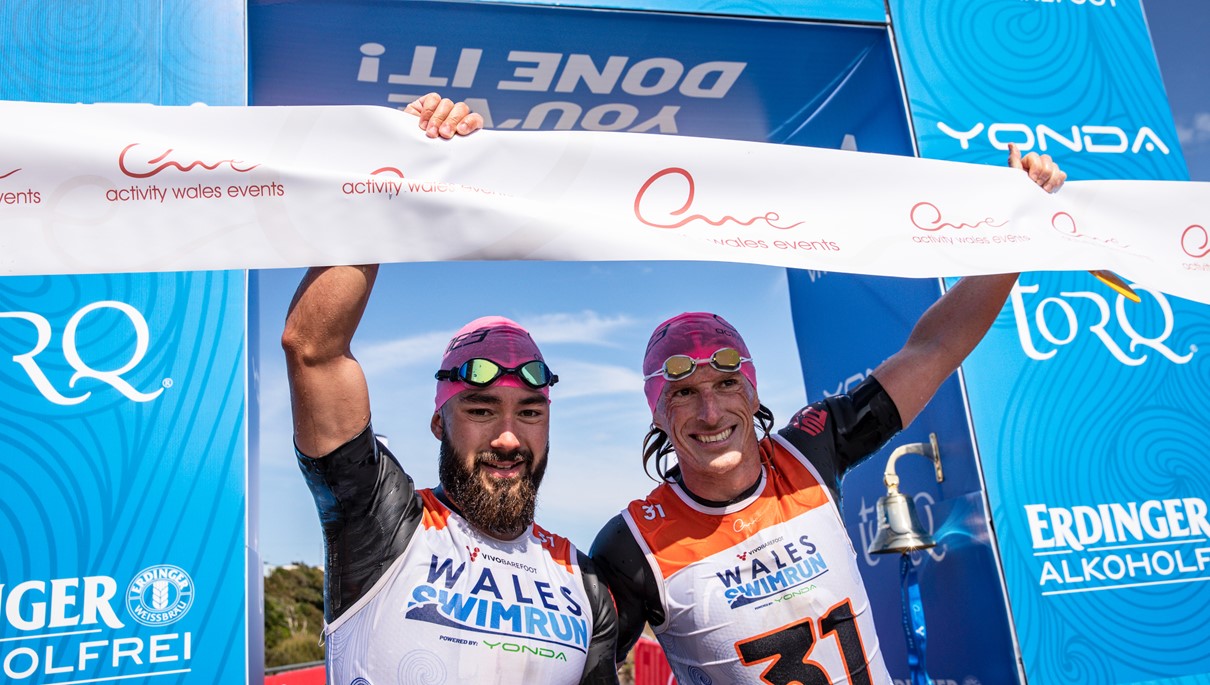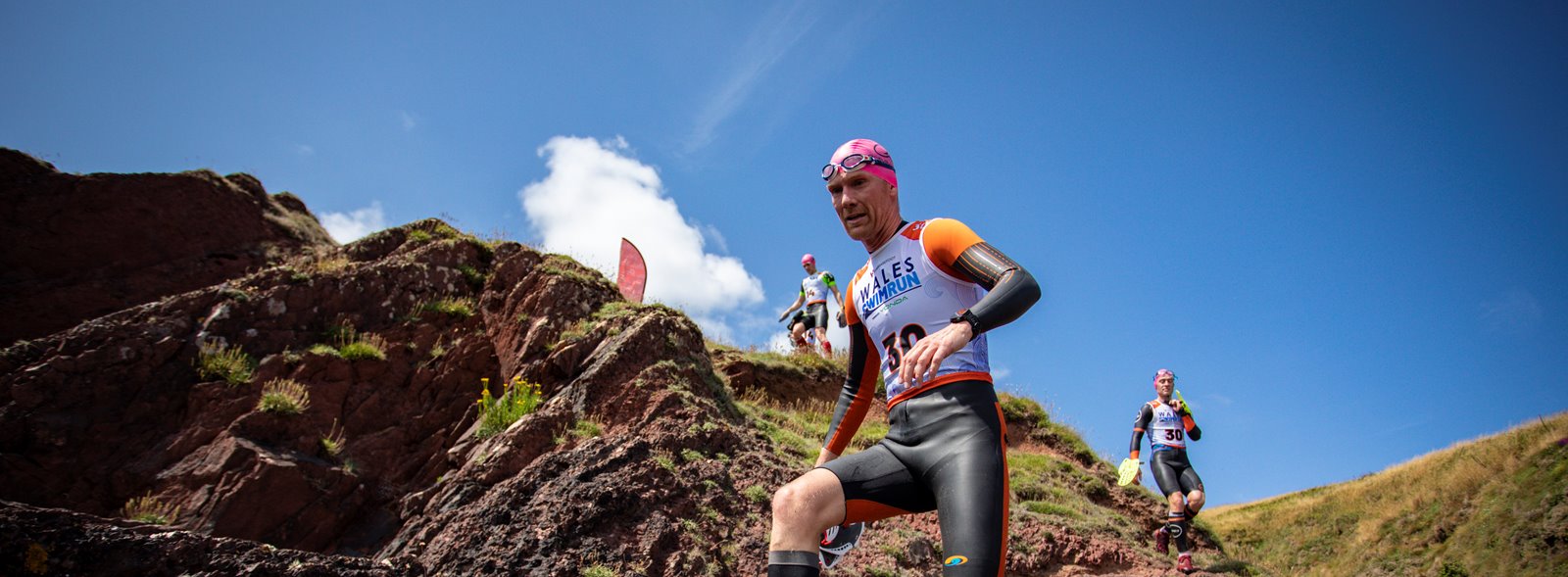Hints & Tips For Swimrun First Timers
Envol share their top tips for swimrun success
The connection to nature, the relationship to your partner, the ebb and flow of movement over land and through water, it is an experience I am sure you are going to cherish.
This is the first article in a series of three that will focus on hints and tips for first timers, but even the more experienced may find them useful. At a later date, part 2 will look at swimrun equipment, and then finally we will explore the topic of how to race together in part 3.
I will have a particular focus on pairs racing but I’m sure that the soloists among you can benefit too. So what’s so special about swimrunning? You win as a team and you lose as a team. You have a responsibility for your partner’s well-being. You need to put aside your own ego. You are not stronger than the weakest link, but paradoxically you are stronger together.


So the first tip is to find a compatible partner. This is multifactorial and actually more difficult that one may think to get right. Here are some common misconceptions:
“He/she is too fast a runner” - Just because a prospective partner is faster in the local parkrun doesn’t necessarily mean they will be faster on technical trails. Running economy and raw speed does not translate directly to the trail. Plus having a strong runner can be an advantage if that individual is willing to work for the team.
“He/she is too fast a swimmer” - Drafting a swimmer allows you to swim faster for a given level of effort, or to use less energy to swim the same speed, which both can be very useful in swimrun. A good slipstream could be worth as much as 10 seconds per 100 meters! Following another swimmer takes away the task of navigating which means you don’t have sight and therefore increase drag. Motivationally keeping the lead swimmer’s feet close provides an incentive to work hard and possibly even a distraction from the discomfort of your effort. Additionally it allows you to Increase your own focus on form, as pacing and navigation are handled by the lead swimmer. Add a swim tether and you have even less of a disadvantage.
Differing abilities when matched well can work to your advantage, which brings us to the important topic of mindset. Make sure the “why” lines up with your partner’s. Is your goal to crush the competition or just to experience the amazing land/seascape? Or something else? Make sure your goals are in line. We will discuss the intricacies of preparation and execution of racing together in Part 3 but here are some initial tips.
Swimming with a pull-buoy with shoes on
- Don’t kick - kicking will only create more drag and waste energy. But that doesn’t mean your core and legs are passive.
- Squeeze the pull buoy with glutes and hamstrings keeping a tight line and tension though the long axis of your body.
- Keep your feet together and as pointed as your ankle flexibility allows.
Exercise: Swim 4 x (30s actively contracting the glutes and squeezing the pull buoy, the 30s passive lower body) Tune in to the difference.
Swimming with paddles
- The stroke goes from soft to hard, slow to fast - it is NOT mono-speed.
- When you have found your hold on the water use the lats (big back muscles) and not the biceps/triceps.
- Stroke timing is important, the weight transfer of the recovering arm triggers the pull, think three-quarter catch up, with the hands passing each other in front of the head.
- Enter straight in front on the shoulder and lever the body past the stationary paddle on a straight track.
Exercise: Single arm drill - 4 x 30s trying to feel the big muscles of the back and core levering your body past your hand tracking as straight as you can.
Novice Gear Tips
We will get more into gear selection in Part 2, but for novice swimrunners select a pull buoy that puts you in a good horizontal position with heels at the surface of the water (with shoes on). The optimal size will depend on your body composition and you may be tempted to get the largest available pull-buoy but this can lead to back pain as the core needs to be trained to handle the additional flotation.
When it comes to paddles, studies show that force production remains similar as paddle surface area increases. Swimmers subconsciously slow their stroke rate to compensate. So larger doesn’t always mean faster, and it can also lead to shoulder injuries particularly due to applying too much force, too early in the stroke cycle. Start with smaller, more flexible paddles and work up from there. Smaller paddles can also be an advantage in rough seas and cold water where a higher stroke rate generates warmth and where more maneuverable paddles can be a benefit.

Sighting and Navigation
Sighting and navigation are key skills to minimize your time in the water. To sight you have to lift your head without lifting your torso which creates drag. Think “crocodile eyes”. This needs to be practiced to become competent. Before entering the water try to pick out a high-point on the landscape to use as a sighting mark - when you are in a rolling sea you will be grateful you have something to aim at!
Transitions
Transitions are often overlooked but can be an area where a lot of time can be lost, or for the less competitive, can be a source of unnecessary stress. If you already have a partner and they are local to you, plan some specific transition training sessions. This can be done on a loop incorporating a short run and a short swim.
Transition-In: Work on the following until it becomes second nature. As you approach the swim, without stopping…
- Zip up the wetsuit
- Put your goggles on
- Place the pull-buoy between the legs
- Connect the tether
- Secure the middle finger in the paddle loop
- Sight the exit
- Communicate “Ready”… “Yes”… “Go”
Transition-Out: This is typically less technical although slippery rocks can play their part! Swim as far as you can, as close as possible to the shore. Beach exit - just go, position pull-buoy, open the wetsuit, remove googles. Technical exit - remove the middle finger from the paddle to allow the hands to grip. You may need to assist one another - stay conscious of your partner’s situation. When you are both vertical… go…
Another reason to work on your transitions is that the smoother and more seamless they become the greater your state of flow, this is when the unique adventure of swimrun is fully experienced. Good luck and see you in July.
We hope that has given you some practical hints and tips you can use. In the next two parts we will go into a little more detail on the evolving world of swimrun equipment and then some advice on how to race together, both in terms of preparation and execution.
Happy Swimrunning,
Tom - Envol





